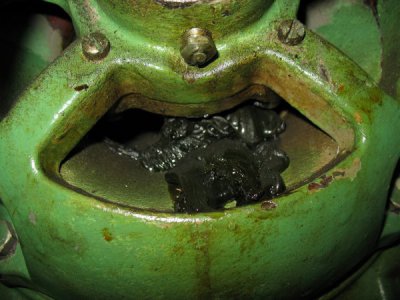I Need a bit of advice from other VN owners.
I'm still waiting on the electrical controller panel for the rotary phase converter, but while waiting I thought I might ask a few more Van Norman 12 questions.
I read the VN 12 operation and maintenance instruction manual I found on the vintage machine web site and it got me thinking.
1. I don't see any method of fully "tramming "the spindle head. The "nod" from vertical to horizontal is adjustable but I don't see any "side angle" adjustment. Sorry if I'm using the wrong terms. Am I missing something?
2. It recommends using a flushing oil to "clean" the gear boxes periodically. I'm familiar with automotive flushing such as Gunk but not familiar with machinery flushing agent. Is there a difference? What do you all use?
3. The manual recommends 30 wt oil, for almost everything. It seems heavier than most other machines. Is that what you all recommend?
4. It says to use grease or high temp grease in the rear spindle bearings using grease zerks. I don't see any "exit" or weep spots to know when you have added enough grease. Any thoughts?
Thank you for any responses and your knowledge and time.
John Minnesota
Sent from my iPhone using Tapatalk
I'm still waiting on the electrical controller panel for the rotary phase converter, but while waiting I thought I might ask a few more Van Norman 12 questions.
I read the VN 12 operation and maintenance instruction manual I found on the vintage machine web site and it got me thinking.
1. I don't see any method of fully "tramming "the spindle head. The "nod" from vertical to horizontal is adjustable but I don't see any "side angle" adjustment. Sorry if I'm using the wrong terms. Am I missing something?
2. It recommends using a flushing oil to "clean" the gear boxes periodically. I'm familiar with automotive flushing such as Gunk but not familiar with machinery flushing agent. Is there a difference? What do you all use?
3. The manual recommends 30 wt oil, for almost everything. It seems heavier than most other machines. Is that what you all recommend?
4. It says to use grease or high temp grease in the rear spindle bearings using grease zerks. I don't see any "exit" or weep spots to know when you have added enough grease. Any thoughts?
Thank you for any responses and your knowledge and time.
John Minnesota
Sent from my iPhone using Tapatalk


